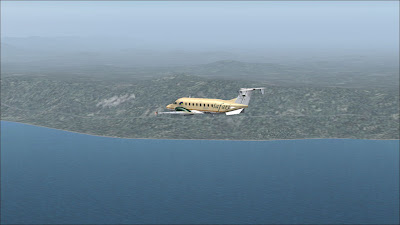DAY 23, LEG 96 - Mount Hagen to Cairns
A new day brings a new country as we make our way to the east coast of Australia. The first leg of the day takes us to Cairns in Queensland, Australia. The city is well known as the gateway for tourists to the rainforest and Great Barrier Reef. Unfortunately we will not have enough time to visit either of those destinations on this trip!
Parked in the morning at Mount Hagen airport waiting for taxi clearance.
Lined up ready for take off with the terrain issues very visible in the background.
Climbing past Mount Hagen.
A good view of the New Guinea highlands.
Another interesting view of the highlands.
Leaving the highlands behind as we head south towards the Torres Strait.
Approaching the Fly River as it flows into the Gulf of Papua.
Approaching the Torres Strait with Daru island in the foreground.
The Torres Strait with Australia just visible ahead.
Beginning the descent into Cairns.
15 mile final to runway 15 at Cairns.
Final approach.
Parked at Cairns next to a Regional Pacific EMB-120.
AYMH - YBCS stats
Take off time: 0553
Landing time: 0833
Flight time: 02:40
Fuel used: 1129kgs / 2484lbs



















































